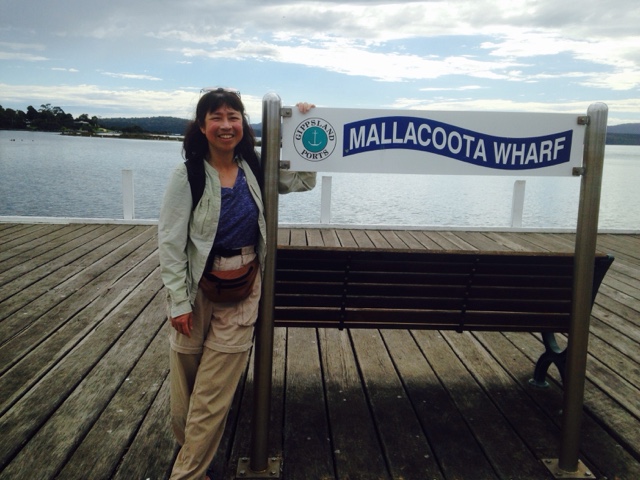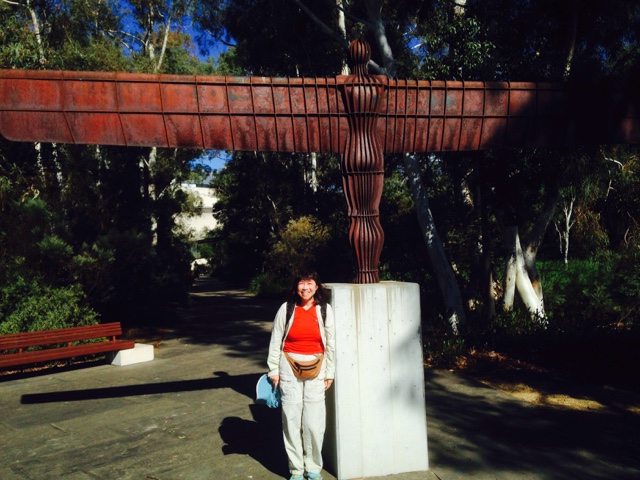Uluru
We finally reached Uluru-Kata Tjuta National Park in the southern portion of the Northern Territory of Australia, part of the so-called Red Centre of the continent. The National Park is a UNESCO World Heritage area. It is best known for Uluru (also known as "Ayers Rock"), a single massive rock formation sacred for the obriginal people. Therefore, climbing Uluru is strongly discouraged by sign-posts, but some people did it anyway. It rises 348 metres above the plain (862.5 metres above sea level), extends some 1.5 miles underground, and has a circumference of 9.4 km.
We were seeing the Rock at sunset changing colour from flaming red to dark brown, rather than to blue or violet as alleged in some tourist information, yet still impressive. Honestly, I saw sites in USA with similar color and cultural significance but not as large. Had I known how long the drive was and how plain the scenery was during the long journey, I would not have spent so much time and efforts to see the rock. Anyway, I am here so better make the best out of it.
We stayed at AYERS ROCK CAMPGROUND LOCATED 15km from Uluru at $20 per person at no-power campsite, so we can see the sunrise at the rock. The campground provides a range of services and facilities including a swimming pool, playground, bbq facilities and outdoor kitchen (with microwaves, stoves, refrigerators), and self-service laundry facilities. The food supplies prices in its general store (twice than major cities) are better than those en route to the rock (3-4 times than major cities). It s best to stock up non-fruit food/water at Port Augusta.







Comments
Post a Comment